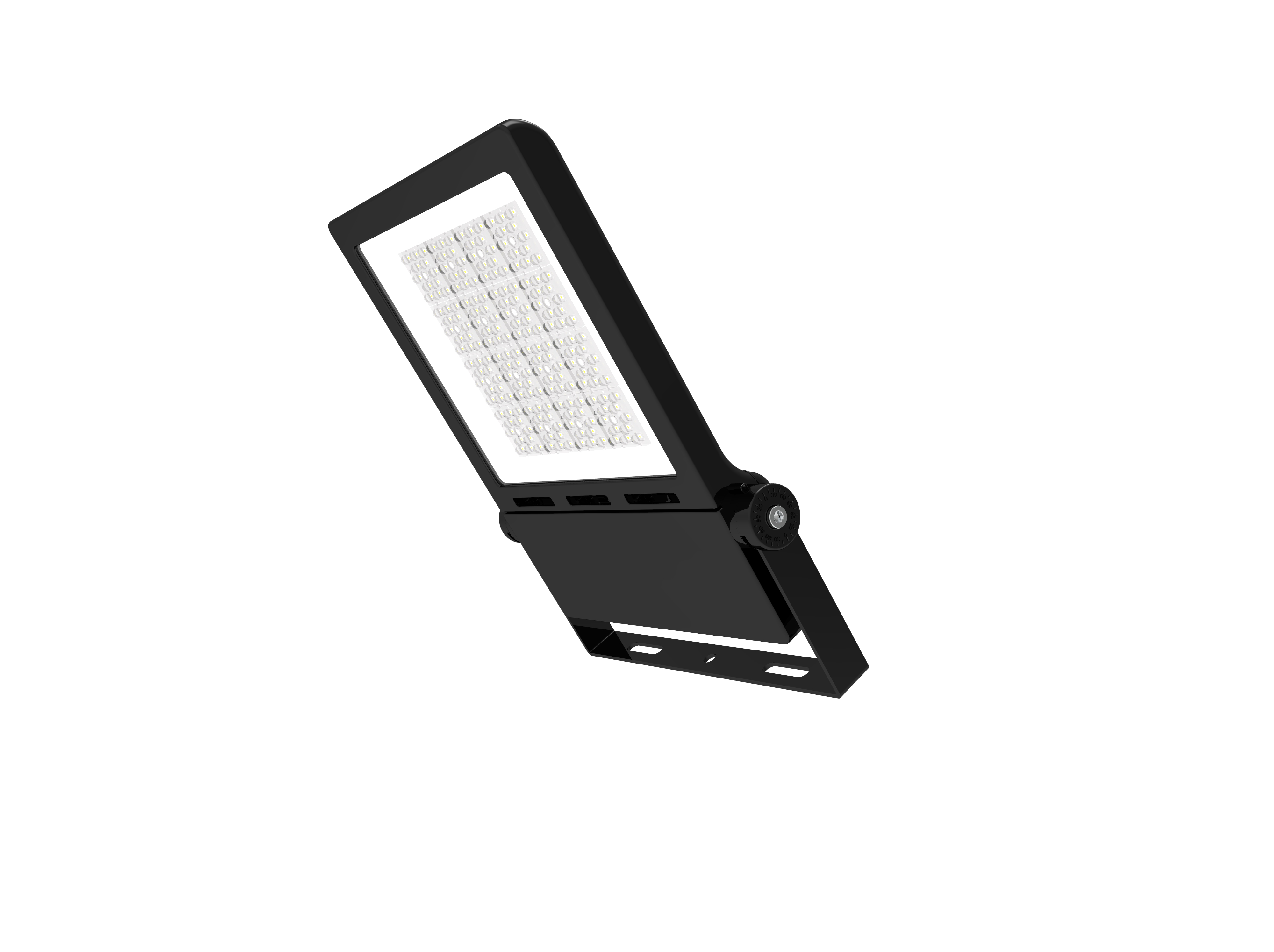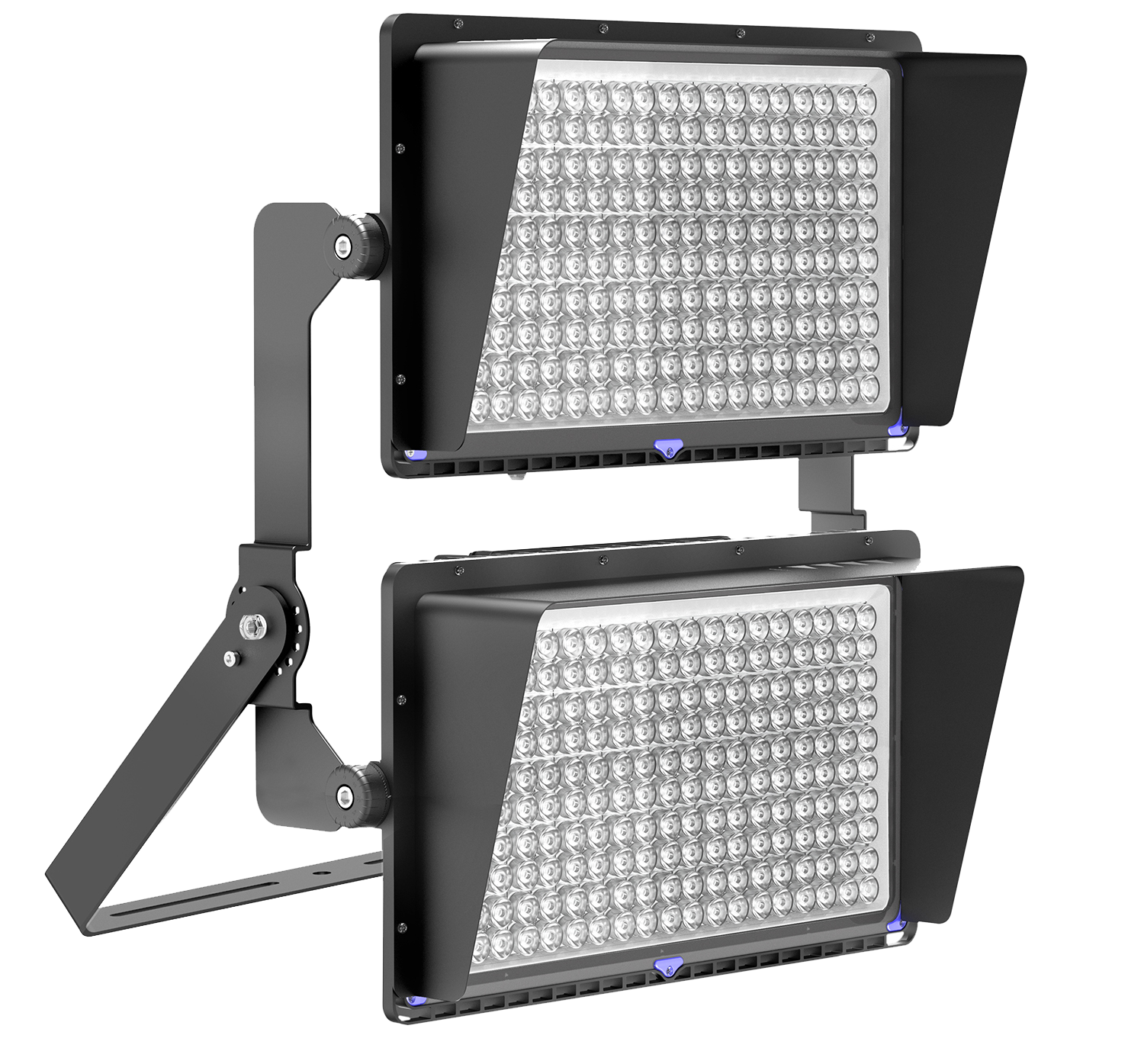The proper operation and performance of LED lighting systems heavily rely on having an adequate LED driver. An LED driver is an electronic device responsible for regulating power and current flow within the system. Therefore, it is crucial to carefully select LED lights with compatible LED drivers in order to ensure safety in your lighting projects.
However, if you are not familiar with the distinctions between Class I, Class II, Class 1, and Class 2 LED drivers, there is a possibility that you lack essential information which can greatly influence both safety measures and overall performance of your lighting system.
This blog post aims to bridge this knowledge gap by providing a clear understanding of these different classes along with their significance in relation to various standards and regulations. Armed with this knowledge, you will be able to make well-informed decisions when it comes to choosing suitable LED fixtures for your needs.
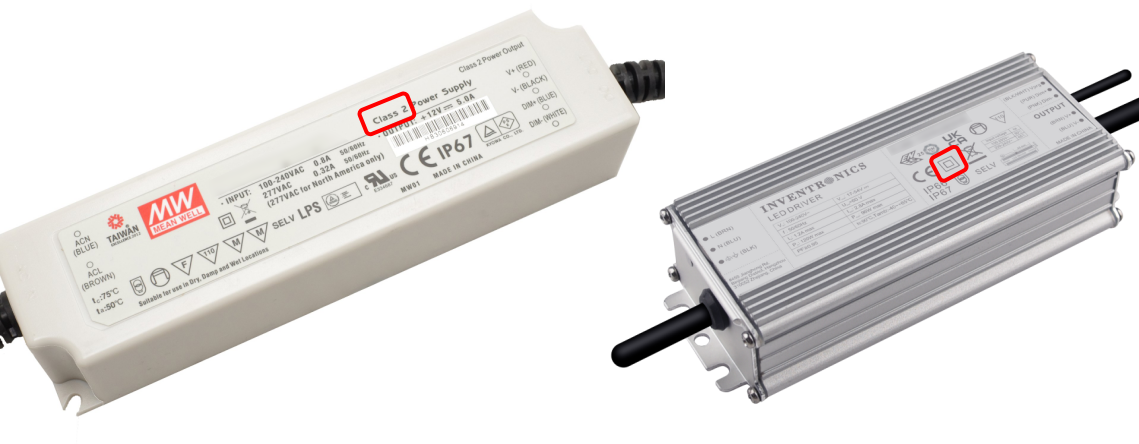
What is LED driver ?
LED drivers are commonly known as LED power supplies and fulfill an analogous role as ballasts do for fluorescent lamps. Their main objective is to guarantee optimal functionality and performance of LEDs by converting incoming AC voltage into an appropriate DC voltage that can effectively power the LED lights. Furthermore, they supply adequate levels of voltage and current specifically tailored for LEDs while simultaneously shielding them from potential damage caused by fluctuations in voltage or sudden increases in power supply.
Different types of LED drivers exist such as constant current variants that maintain stable electrical currents throughout operation or constant voltage models that ensure steady electrical voltages are delivered to the LEDs at all times. Other options include dimmable and non-dimmable versions which allow users flexibility in controlling brightness levels based on their preferences or requirements using compatible dimmer switches that send signals prompting adjustments in output voltages or currents accordingly.
Difference between classes in roman and numeric
When choosing an LED driver, one important consideration is the classification of the driver. There are different standards that classify LED drivers into categories such as Class 1 and Class 2 or Class I, II, and III. It is common for confusion to arise when trying to understand the distinctions between Class 1 and Class 2, as well as between Class I and Class II.
Compliance with the NEC is denoted by roman numeral classes (Class 1 and Class 2), which correspond to the output voltage and power capabilities of AC-DC supplies. Conversely, LED drivers are classified using numeric numerals (Class I, Class II, and Class III) to signify adherence to the IEC. These classifications specifically refer to the internal construction and electrical insulation of the power supply.
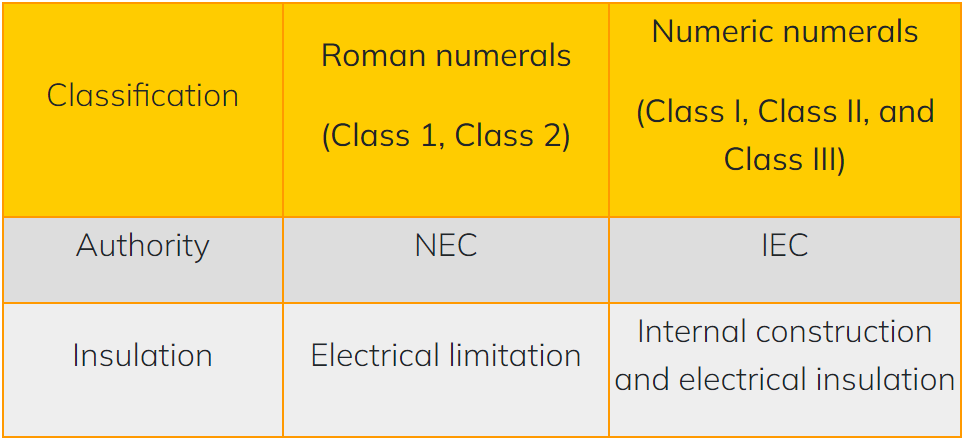
Class 1 vs Class 2
LED drivers are responsible for controlling the power supplied to LED lights and are categorized based on UL standards to ensure safety and performance. UL Class 1 and UL Class 2 are two classifications that impact the design and installation of LED lighting systems in distinct ways.
UL Class 1 drivers possess output ranges that fall beyond UL Class 2 designations. These drivers generate high-voltage output and necessitate safety protection within the fixture. Their capacity to accommodate a greater number of LEDs makes them more efficient compared to Class 2 drivers. Nevertheless, their improper installation or insulation can result in an increased risk of fire or electric shock. The wiring techniques employed for Class 1 drivers must adhere to the power circuit requirements outlined in the NEC (National Electric Code).
UL Class 2 drivers meet the requirements of UL1310, ensuring that their output is safe to touch and no major safety precautions are necessary at the LED luminaire level. These drivers pose no risk of fire or electric shock. They function using less than 60 volts in dry conditions, less than 30 volts in wet conditions, less than 5 amps, and less than 100 watts. However, these limitations impose restrictions on the number of LEDs that a Class 2 driver can power. The wiring methods for Class 2 drivers are not as strict as those for Class 1 drivers and allow for the use of smaller gauge wires and connectors.
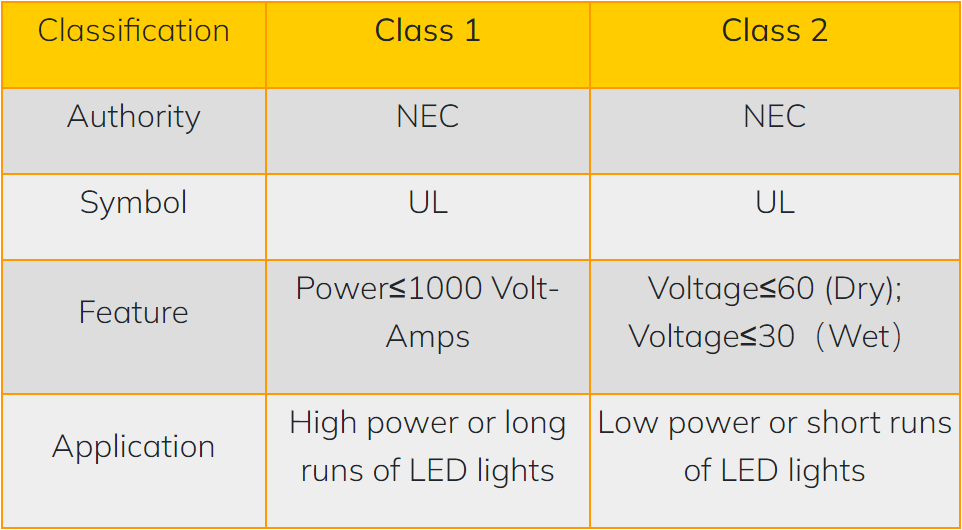
To sum up, UL Class 1 and UL Class 2 LED drivers vary in terms of their output ranges, safety features, efficiency levels, and wiring methods.
Class I vs Class II
Class I power supplies feature basic insulation and a grounding connection to the protective earth. Basic insulation acts as a barrier between live parts and prevents direct contact. The protective earth connection is established through a wire that links the power supply’s metal chassis to the ground. This enables fault current to flow towards the ground in case of insulation failure, prompting a circuit breaker or fuse to disconnect the power supply. To ensure safety, Class I power supplies necessitate a three-wire power cord with a safety earth connection.
Class II power supplies are equipped with either double insulation or reinforced insulation, and they do not require a protective earth connection. Double insulation is a combination of basic and supplemental insulation, where an additional layer of material is added to the basic insulation. On the other hand, reinforced insulation provides the same level of protection as double insulation but consists of only one layer. Both types of insulation ensure safety from electric shock even if one layer fails. Due to their higher levels of insulation, Class II power supplies utilize a two-wire power cord without a safety earth connection. The safety label for Class II devices features the concentric square symbol.
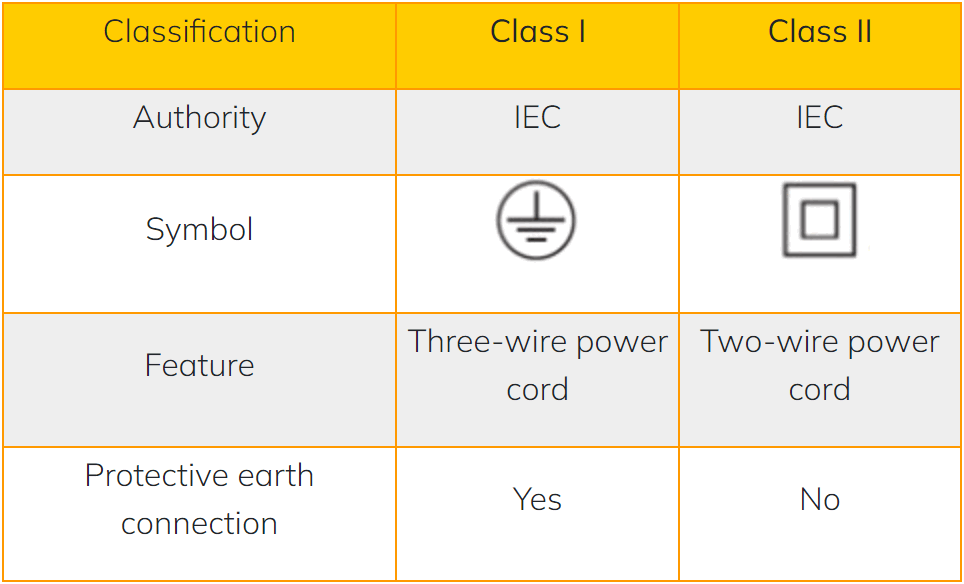
Class II and Class I power supplies differ primarily in their insulation type and level, as well as their need for a protective earth connection. Class II power supplies feature higher insulation levels and do not require earthing, whereas Class I power supplies have lower insulation levels and necessitate earthing. Although both classes offer sufficient protection against electric shock, their distinct applications and requirements set them apart.
VKS Class I LED Floodlight & High Mast Lighting
280,000lm LED Flood Lighting For Stadium Lighting
Feel free to reach out to us if you have any inquiries or require additional support.
Post time: Aug-11-2023

